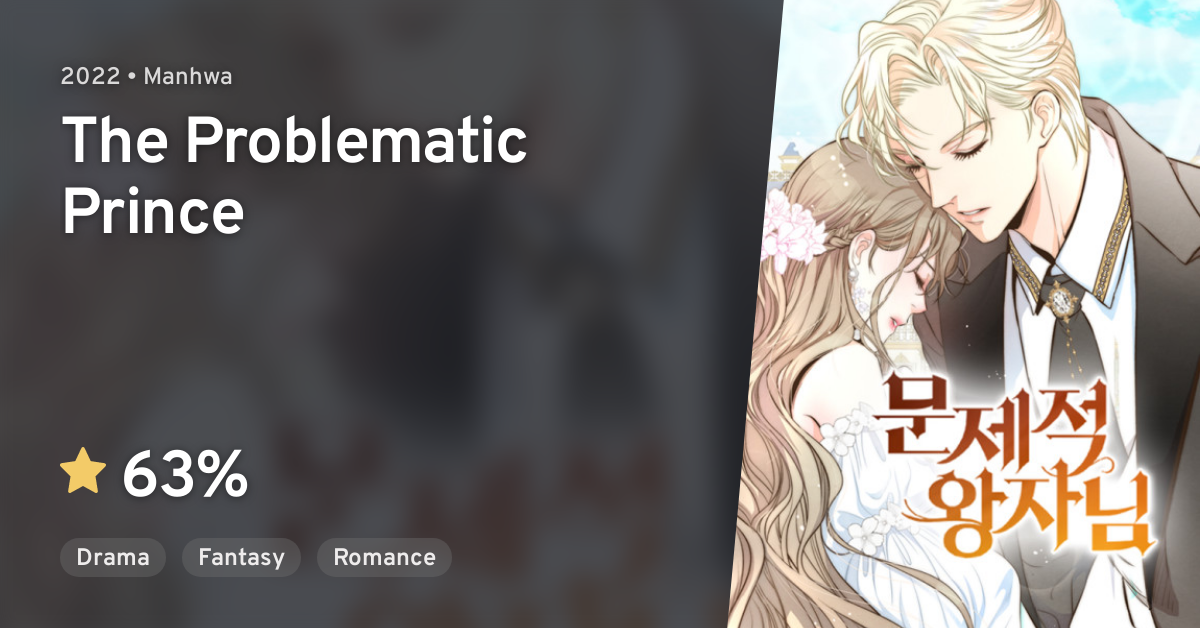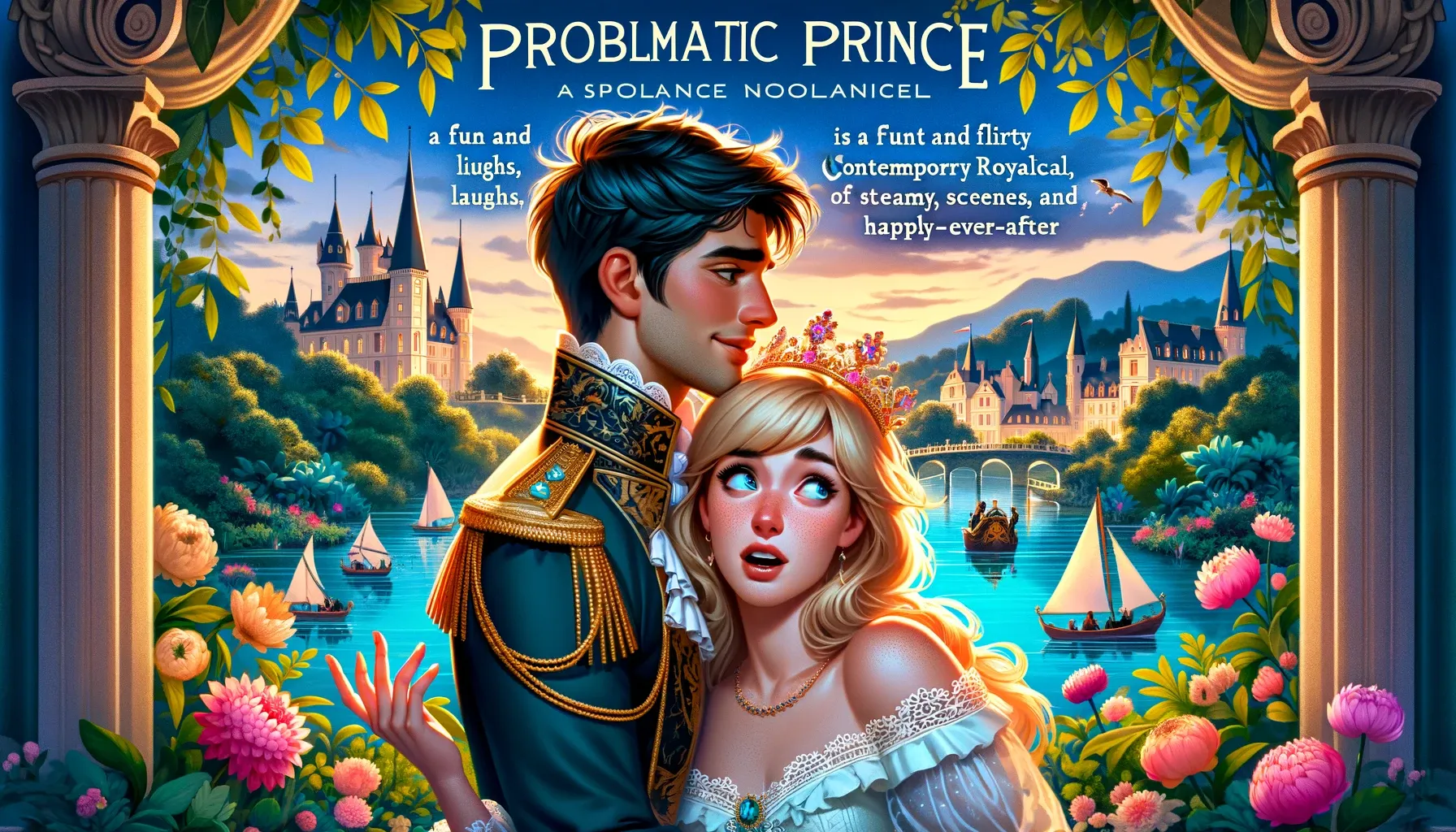The Problematic Prince: Understanding The Challenges Of Modern Royalty
Let’s face it, folks—royalty ain’t what it used to be. The world has changed, and so have the expectations placed on those born into or married into the royal family. Today, we’re diving deep into the life of "the problematic prince" and exploring why modern royalty is more complicated than ever before. From scandals to public scrutiny, this is a story about what it really means to wear the crown—and how heavy that crown can feel.
Now, when we talk about "the problematic prince," we’re not just throwing shade or gossiping like some tabloid rag. No, this is about understanding the pressures, challenges, and expectations that come with being a member of a royal family in the 21st century. It’s not all tea parties and palace gardens; it’s a balancing act between tradition and modernity, privacy and public life, duty and personal freedom.
So grab your favorite drink, settle in, and let’s unpack this together. Whether you’re a die-hard royal watcher or just curious about what makes these princes tick, this article promises to give you insight into the struggles of modern royalty—and maybe even make you rethink what it means to be a prince in today’s world.
Read also:How Tall Is Jannik Sinner A Complete Guide To The Rising Tennis Star
Here’s the deal: royalty ain’t just about waving from a balcony anymore. There’s so much more going on behind the scenes, and it’s not always pretty. Stick around, and we’ll break it down step by step.
Table of Contents
- Introduction
- The Evolution of Royalty
- Key Challenges Facing Modern Royalty
- The Role of Media in Shaping Perceptions
- Public Expectations vs Reality
- Mental Health Struggles in Royalty
- Scandals: The Double-Edged Sword
- Finding Identity Amid Tradition
- The Financial Side of Royalty
- The Future of Royalty
- Conclusion: What’s Next for the Problematic Prince?
The Evolution of Royalty
Back in the day, royalty was all about power, land, and divine right. Kings and queens ruled with an iron fist, and their word was law. But fast forward to today, and things have changed drastically. Modern royalty is more about symbolism, diplomacy, and public service. Princes and princesses are expected to be role models, advocates for social causes, and ambassadors for their nations.
But here’s the kicker: while the role has evolved, the scrutiny hasn’t. In fact, it’s intensified. With the rise of social media and 24/7 news cycles, every move a royal makes is dissected and debated. That’s why "the problematic prince" often finds himself in hot water—not because he’s inherently bad, but because the world is watching, and mistakes are magnified.
From Monarchs to Media Sensations
Let’s rewind a bit. Historically, royalty was shrouded in mystery. You didn’t see them on TV or read about their personal lives in newspapers. But today? Oh, it’s a whole different ballgame. Royal weddings are global events, and even the smallest details—like what a prince wears to a charity gala—are picked apart by millions of people around the world.
This evolution has its pros and cons. On one hand, it’s given royals a platform to advocate for important causes and connect with people on a more personal level. On the other hand, it’s made their lives incredibly public, leaving little room for privacy or mistakes.
Key Challenges Facing Modern Royalty
So, what exactly are the challenges that "the problematic prince" faces? Let’s break it down:
Read also:Explore The Universe With Star Trek Fleet Command Your Ultimate Guide
- Public Scrutiny: Every word, gesture, and outfit is analyzed by the media and the public.
- Family Dynamics: Being part of a royal family means dealing with complex relationships and sometimes clashing with tradition.
- Work-Life Balance: Royalty isn’t a 9-to-5 job. It’s a 24/7 commitment, and finding time for personal life can be tough.
- Financial Transparency: With public funds often supporting royal activities, there’s pressure to justify every expense.
These challenges aren’t new, but they’ve become more pronounced in recent years. The digital age has made it harder for royals to escape the spotlight, and the expectations placed on them are higher than ever.
Case Study: The Problematic Prince
Take, for example, a hypothetical prince (let’s call him Prince Alex). He’s young, handsome, and seemingly has it all. But beneath the surface, he’s struggling to balance his duties with his personal desires. Maybe he wants to pursue a career outside of royalty, or maybe he’s dealing with the pressure of finding a suitable partner. Whatever the case, his every move is under the microscope, and one wrong step could lead to a media firestorm.
The Role of Media in Shaping Perceptions
Let’s talk about the elephant in the room: the media. Love it or hate it, the media plays a massive role in shaping how we perceive royalty. Tabloids sensationalize scandals, while serious outlets focus on the positive contributions royals make to society. It’s a double-edged sword that "the problematic prince" has to navigate carefully.
But here’s the thing: not all media coverage is bad. In fact, many royals use the media to their advantage, using interviews and public appearances to highlight important causes and connect with people on a deeper level. The key is knowing how to handle the media—and that’s where things can get tricky.
How Royalty Engages with the Media
Some royals thrive in the spotlight, using media platforms to share their stories and advocate for change. Others prefer to keep a low profile, focusing on their work behind the scenes. Either way, the media is an unavoidable part of modern royalty, and learning how to manage it is essential for any prince or princess.
Public Expectations vs Reality
Now, let’s talk about the gap between public expectations and reality. People often have romanticized ideas about what it means to be royalty. They imagine lavish parties, glamorous lifestyles, and endless freedom. But the truth is, being a prince isn’t all sunshine and roses. It’s a demanding job that requires sacrifice, dedication, and a thick skin.
For "the problematic prince," this gap can be especially challenging. He might feel like he’s letting people down if he doesn’t live up to their expectations, but at the same time, he’s dealing with personal struggles that no one sees. It’s a delicate balancing act, and not everyone gets it right.
Breaking Stereotypes
One of the biggest challenges for modern royalty is breaking free from stereotypes. People expect princes to be charming, princely, and perfect—but real life is messy. The key is being authentic and showing the world that royalty isn’t just about glitz and glamour. It’s about hard work, sacrifice, and making a difference.
Mental Health Struggles in Royalty
We can’t talk about "the problematic prince" without addressing mental health. The pressures of royal life can be overwhelming, and many princes and princesses have spoken out about the toll it takes on their mental well-being. From anxiety to depression, the challenges are real—and they’re not something that can be ignored.
Thankfully, there’s been a shift in recent years toward openness and honesty about mental health. More royals are speaking out and using their platforms to raise awareness about the importance of mental health care. It’s a powerful message that resonates with people around the world.
Breaking the Stigma
By sharing their struggles, "the problematic prince" and other royals are helping to break down the stigma surrounding mental health. They’re showing the world that it’s okay to ask for help and that even those in positions of power can struggle with their mental well-being.
Scandals: The Double-Edged Sword
No discussion of modern royalty would be complete without talking about scandals. From tabloid gossip to serious allegations, scandals are a fact of life for many royals. But here’s the thing: not all scandals are created equal. Some are blown out of proportion, while others reveal legitimate issues that need to be addressed.
For "the problematic prince," navigating scandals can be a minefield. One wrong move, and the media circus can spiral out of control. But with the right approach, even scandals can be opportunities for growth and change.
Learning from Mistakes
Scandals don’t have to define a prince’s legacy. In fact, they can be opportunities for growth and learning. By acknowledging mistakes and taking steps to make things right, "the problematic prince" can turn a negative situation into a positive one.
Finding Identity Amid Tradition
One of the biggest challenges for "the problematic prince" is finding his identity amid the weight of tradition. Royalty comes with a lot of expectations, and breaking free from those expectations can be tough. But it’s also essential for personal growth and fulfillment.
Whether it’s pursuing a passion outside of royal duties or simply finding ways to express himself authentically, "the problematic prince" has to navigate the delicate balance between tradition and individuality.
Modernizing Tradition
Tradition doesn’t have to be stagnant. In fact, many royals are finding ways to modernize tradition while still honoring their heritage. It’s a balancing act that requires creativity, flexibility, and a willingness to adapt to changing times.
The Financial Side of Royalty
Let’s talk money. Being a prince might sound glamorous, but it comes with financial responsibilities that most people don’t think about. From funding royal tours to maintaining palaces, the costs add up quickly. And with public funds often supporting these activities, there’s pressure to justify every expense.
For "the problematic prince," managing finances is a crucial part of the job. It’s not just about spending wisely—it’s about being transparent and accountable to the public.
Transparency and Accountability
Modern royalty is all about transparency. By being open about how funds are used, royals can build trust with the public and demonstrate that their work has value. It’s a crucial step in ensuring the longevity of the institution.
The Future of Royalty
So, what does the future hold for "the problematic prince" and modern royalty as a whole? The truth is, no one knows for sure. But one thing is certain: the role of royalty will continue to evolve as the world changes. Whether it’s adapting to new technologies, addressing social issues, or finding ways to connect with younger generations, the future of royalty is full of possibilities.
For "the problematic prince," the key is embracing change while staying true to his values. It’s a tall order, but with the right mindset and support, he can navigate the challenges of modern royalty and make a lasting impact on the world.
Conclusion: What’s Next for the Problematic Prince?
In conclusion, "the problematic prince" is more than just a headline or a tabloid story. He’s a symbol of the challenges faced by modern royalty—a balancing act between tradition and change, duty and personal freedom, and public scrutiny and privacy. By understanding these challenges and working to address them, royals can continue to play an important role in society.
So, what’s next for "the problematic prince"? Only time will tell. But one thing’s for sure: the world will be watching, and the decisions he makes today will shape the future of royalty for generations to come.
Got thoughts on this? Leave a comment below, share this article, or check out some of our other pieces on the fascinating world of royalty. Together, let’s keep the conversation going!


